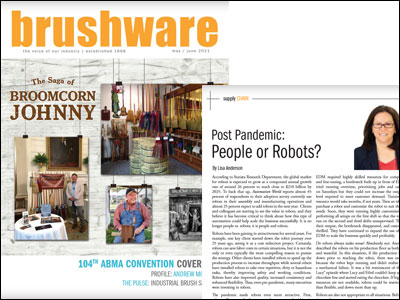According to Statista Research Department, the global market for robots is expected to grow at a compound annual growth rate of around 26% to reach close to $210 billion by 2025. For example, according to Automation World, almost 45% of respondents currently use robots in their assembly and manufacturing operations and almost 25% expect to add robots in the next year. Clients and colleagues are starting to see the value in robots, and they believe it has become critical to think about how this type of automation could help scale the business successfully. It is no longer people vs. robots; it is people and robots.
Robots have been gaining in attractiveness for several years. For example, one key client started down the robot journey over 25 years ago, seeing it as a cost reduction project. Certainly, robots can save labor costs in certain situations, but it is not the only or even typically the most compelling reason to pursue the strategy. Other clients have installed robots to speed up the production process to increase throughput while several others have installed robots to take over repetitive, dirty or hazardous tasks, thereby improving safety and working conditions. Robots have also improved quality, increased consistency, and enhanced flexibility. Thus, even pre-pandemic, many executives were investing in robots.
The pandemic made robots even more attractive. First, robots could stand within 6 feet of employees. Clients with close quarters without robots struggled during the pandemic whereas those with robots (or manufacturing processes not requiring the close proximity of people) thrived. Also, if the robots could take on extra tasks, when employees were out due to COVID, manufacturing and distribution didn’t have to stop. Lastly, most clients had to scale up and/or down rapidly during the pandemic, and those clients with robots were more quickly able to adapt to changing conditions by ramping up or down as needed.
One aerospace manufacturing client had a bottleneck in their EDM (electrical discharge machining) production area. They had several steps prior to EDM and several steps following EDM in their production process. Unfortunately, because EDM required highly skilled resources for complex setups and fine tuning, a bottleneck built up in front of EDM. They tried running overtime, prioritizing jobs, and catching up on Saturdays but they could not increase the output to the level required to meet customer demand. Training another resource would take months, if not years. Then an idea arose to purchase a robot and customize the robot to suite their unique needs. Soon, they were running highly customized jobs and performing all setups on first shift so that the robot could run on 2nd and 3rd shift unsupervised. They tripled their output, the bottleneck disappeared, and customers were thrilled. They have continued to expand the use of robots in EDM to scale the business quickly and profitably.
Do robots always make sense? Absolutely not. Another client described the robots on his production floor as both beneficial and wasteful. In this situation, if the production line broke down prior to reaching the robot, there was excess waste because the robot kept running and didn’t realize there was a mechanical failure. It was a bit reminiscent of the “I Love Lucy” episode where Lucy and Ethel couldn’t keep up with the chocolate line and started eating the chocolate. If highly skilled resources are not available, robots could be restrictive rather than flexible, and down more than up. Robots are also not appropriate to all situations. Before wasting time and resources on a poor return on investment, perform a quick evaluation and trial. On the other hand, what is common across every client is the need to consider robots in your technology roadmap. Post pandemic, successfully scaling the business has risen to the top of the executive’s priority list. Thus, evaluating robots must be a top priority.
As originally published in Brushware Magazine on May-June 2021



